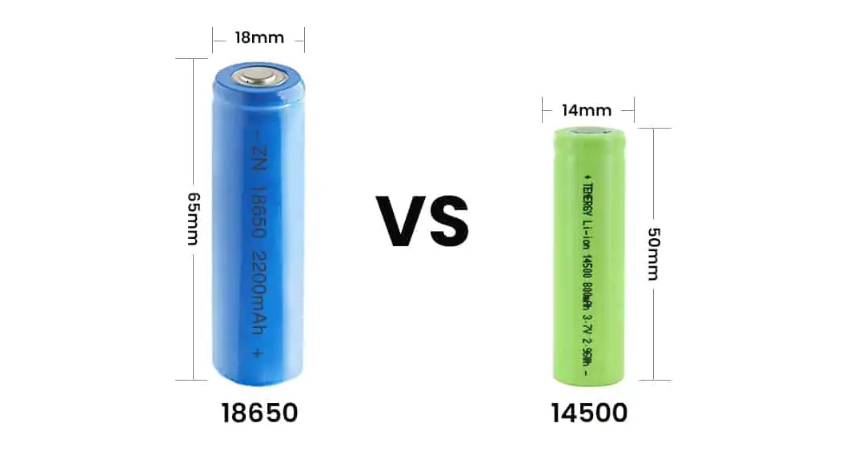
Introduction
In the ever-evolving landscape of rechargeable lithium-ion batteries, the competition between 21700 and 18650 batteries has become a focal point. As technology advances, the demand for efficient, powerful, and cost-effective energy storage solutions continues to rise. This article aims to dissect the nuances of 21700 vs 18650 batteries, exploring their characteristics, applications, charging compatibility, longevity, cost considerations, and key factors to ponder when selecting the right lithium battery for diverse applications.
What are 21700 and 18650 Batteries?
Before delving into the intricacies of the battle between these batteries, let’s establish a foundational understanding. Both 21700 and 18650 batteries belong to the realm of rechargeable lithium-ion batteries, finding ubiquitous use in an array of devices such as laptops, power tools, electric vehicles, and flashlights.
- 21700 Battery: Measuring 21mm in diameter and 70mm in length, the 21700 battery represents a relatively recent addition to the battery landscape. Its larger size facilitates higher energy density, making it an appealing choice for applications where space optimization and extended range are paramount.
- 18650 Battery: In contrast, the 18650 battery, with dimensions of 18mm in diameter and 65mm in length, has long been a stalwart in the realm of rechargeable batteries. Widely available and reasonably priced, it has established itself as a go-to choice for various electronic devices.
21700 vs 18650 Batteries: A Comparative Analysis
1. Chemistry and Voltage:
- Both 21700 and 18650 batteries utilize lithium-ion technology and operate within a voltage range of approximately 3.6 – 3.7 volts.
2. Charging Compatibility:
- Compatibility Warning: Charging a 21700 battery in a charger designed for 18650 batteries is not recommended. The larger size and different specifications of the 21700 battery may result in undercharging, overcharging, or overheating, posing potential safety hazards.
3. Longevity:
- Generally, a 21700 battery can outlast an 18650 battery due to its larger size and higher capacity. The enhanced energy density of a 21700 battery results in a longer runtime compared to an 18650 battery under similar conditions.
4. Applications:
- 21700 Battery: Suited for high-performance applications requiring extended runtimes, such as electric vehicles, power tools, and high-end flashlights. Additionally, it is utilized in rechargeable battery packs for portable power banks and solar energy systems.
- 18650 Battery: Ideal for smaller electronic devices like laptops, digital cameras, handheld game consoles, portable power banks, e-cigarettes, and LED flashlights.
5. Cost Considerations:
- 21700 batteries, with their higher capacity and relatively newer technology, tend to be more expensive than their 18650 counterparts. Factors influencing cost include brand, capacity, and market availability.
6. Manufacturers of 18650 Cells:
- Major global manufacturers of 18650 cells include Panasonic, LG Chem, Samsung SDI, Sony, and others. It’s crucial to opt for reputable manufacturers to ensure quality and safety in lithium-ion batteries.
How to Choose the Correct Lithium Battery for Your Electric Mobility?
Choosing the right lithium battery for electric mobility involves a thoughtful consideration of various factors:
- Voltage: Align the battery’s power level with your device’s requirements. Ensure compatibility with the device’s power range.
- Capacity: Assess the battery’s size to meet the power needs for the desired travel distance on a single charge. Consider the impact on size, weight, and cost.
- Discharge Rate: Tailor the battery’s discharge rate to match the device’s power requirements, especially for high-speed devices like e-bikes.
- Size and Weight: Ensure the battery fits seamlessly, maintaining the device’s balance without adding unnecessary weight.
- Safety: Prioritize safety features, such as overcharge protection and safeguards against sudden power drains, for secure usage.
- Compatibility: Confirm compatibility with the device’s charging system, as some devices may require specific battery types or chargers.
- Budget: Strike a balance between capacity and cost, choosing a battery that meets requirements without exceeding the budget.
-
18650 vs 14500 Battery: Unraveling the Power Dilemma
- When it comes to rechargeable lithium-ion batteries, the 18650 and 14500 cells stand out as popular choices with distinct characteristics. The ongoing debate over which battery type holds the upper hand in various applications has intrigued tech enthusiasts and industry professionals alike. Let’s delve into the nuances of the 18650 vs 14500 battery comparison to shed light on their chemistry, voltage, charging, discharging, size, applications, capacity, and advantages.
Conclusion
In the realm of 21700 vs 18650 batteries, the choice boils down to specific application needs, balancing factors like size, capacity, cost, and safety. While 21700 batteries offer superior energy density and longevity, 18650 batteries remain a cost-effective and reliable choice for a myriad of devices. As technology advances and consumer demands evolve, the decision between these battery types will hinge on striking the right balance between innovation and practicality. The battle continues, and the optimal choice depends on the unique requirements of each electronic application.


